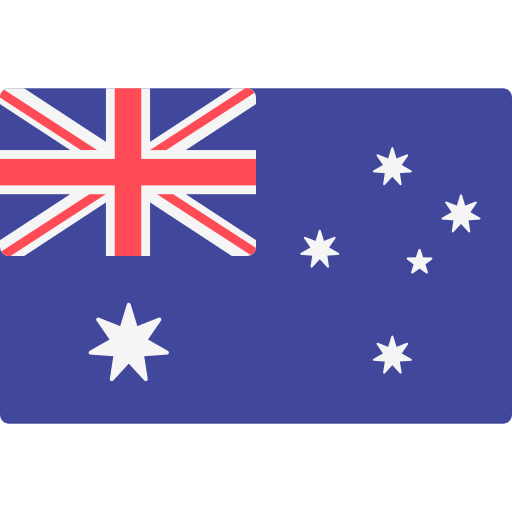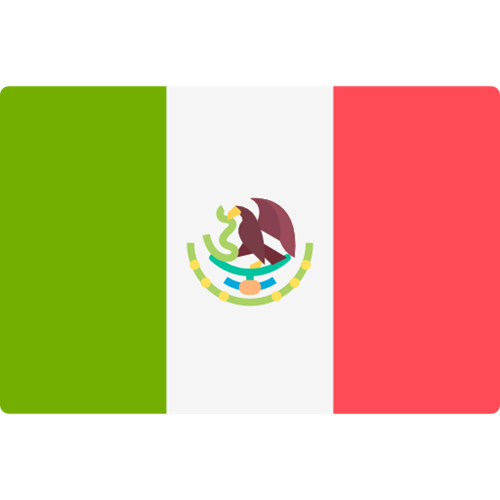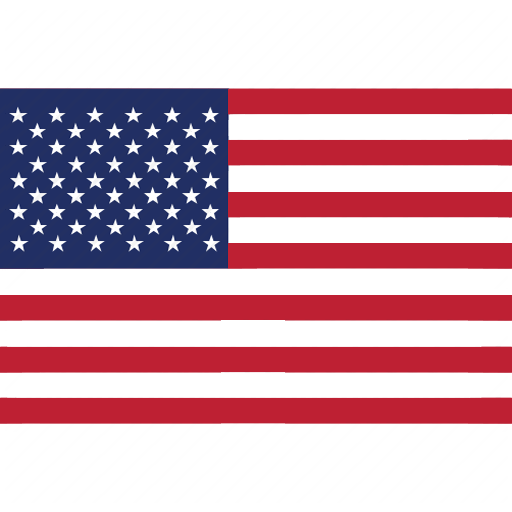Consumer Products | Monthly bulletin | October 2023

Chemical | Cosmetics & Personal Care | Softlines & Leather |
Toys, Childcare & Hardlines | Personal Protective Equipment
Europe
New restriction for microplastics
On the 27th September 2023, the European Commission published an amendment to the Regulation (EC) No 1907/2006 (REACH) on intentionally added microplastics restriction.
The amendment consists of a new entry 78 in Annex XVII under the EU chemical legislation REACH which restricts synthetic polymer microparticles and two new appendices 15 and 16 which indicate rules on proving degradability and solubility of these microplastics.
This restriction covers all intentionally added synthetic polymer particles below five millimetres that are organic, insoluble and resist degradation and indicates that they “Shall not be placed on the market as substances on their own or, where the synthetic polymer microparticles are present to confer a sought-after characteristic, in mixtures in a concentration equal to or greater than 0,01 % by weight.”
Inside the scope of this new restriction: fragrances, cosmetics, detergents, fabric softeners, glitter, toys, medicine and medical device, fertilisers, granular infill material used on artificial sport surfaces amongst others.
This new amendment will come into force on the 17th October 2023 with different transitional periods for application of the restriction in specific type of uses and for suppliers to provide specific information and labelling requirements on certain products. Below is a summary table:
| Transitional periods in specific type of uses | |
|
Date |
Category or type of product |
|
17th October 2027 |
Rinse-off products unless such products are covered by the line of this table or contain synthetic polymer microparticles for use as an abrasive, i.e. namely to exfoliate, polish or clean (“microbeads”). |
|
17th October 2028 |
Detergents, waxes, polishes and air care products, unless those products are covered by the first line of this table or contain microbeads. |
|
17th October 2028 |
Fertilising products which do not fall within the scope of Regulation (EU) 2019/1009. |
|
17th October 2028 |
Products for agricultural and horticultural uses not covered by the previous lines of this table. |
|
17th October 2029 |
Synthetic polymer microparticles for use in the encapsulation of fragrances. |
|
17th October 2029 |
Leave-on products unless such products are covered by the previous lines of this table. |
|
17th October 2029 |
Devices (Regulation (EU) 2017/745), unless those devices contain microbeads. |
|
17th October 2031 |
Plant protection products and seeds treated with those products, and biocidal products. |
|
17th October 2031 |
Granular infill for use on synthetic sports surfaces. |
|
17th October 2035 |
Lip, nail and make-up products, unless such products are covered by the previous lines of this table or contain microbeads. |
| Transitional periods for suppliers to provide specific information and labelling requirements | |
|
Date |
Category or type of product |
|
17th October 2025 |
Suppliers of synthetic polymer microparticles for use at industrial sites, shall provide the following information:
|
|
17th October 2025 |
Suppliers of food additives, synthetic polymer microparticles which are contained by technical means, synthetic polymer microparticles the physical properties of which are permanently modified during intended end use and synthetic polymer microparticles which are permanently incorporated into a solid matrix, shall provide instructions for use and disposal explaining to professional users and the general public how to prevent releases of synthetic polymer microparticles into the environment. |
|
17th October 2026 |
Suppliers of vitro diagnostic device products shall provide instructions for use and disposal explaining to professional users and the general public how to prevent releases of synthetic polymer microparticles into the environment. |
|
From 17th October 2031 until 16th October 2035 |
Suppliers of lip, nail, and make-up products containing synthetic polymer microparticles shall provide the following statement: “This product contains microplastics.” Note: Products placed on the market before the 17th October 2031 are not required to bear that statement until the 17th December 2031. |
|
Note:
|
|
| Information to submit to the ECHA by 31 May of each year | ||
|
Date |
Type of operator |
nformation |
|
2026 |
Manufacturers and industrial downstream users of synthetic polymer microparticles in the form of pellets, flakes, and powders used as feedstock in plastic manufacturing at industrial sites |
|
|
2027 |
Other manufacturers of synthetic polymer microparticles and other industrial downstream users using synthetic polymer microparticles at industrial sites |
|
|
2027 |
Suppliers of medical devices, food additives, in vitro diagnostic devices, synthetic polymer microparticles which are contained by technical means, synthetic polymer microparticles the physical properties of which are permanently modified during intended end use and synthetic polymer microparticles which are permanently incorporated into a solid matrix placed on the market for the first time to professional users and the general public. |
|
The restriction shall not apply to placing on the market of synthetic polymers microparticles, on their own or in mixtures, before the 17th October 2023. However, this date shall not apply to the placing on the market of synthetic polymers microparticles for uses listed in the first table of this bulletin.
For more information, consult the official publication in European Commission website here.
35 new substances subject to export notification
On the 25th August 2023, the European Commission published the Regulation (EU) 2023/1656 which amends Regulation (EU) No 649/2012 regarding EU’s Prior Informed Consent (PIC).
The amendment adds 35 hazardous chemicals, 27 pesticides and 8 industrial chemicals, to Annex I of Regulation (EU) No 649/2012. Now the list contains 295 entries which indicates the chemicals subject to export notification and explicit consent from the importing country.
The aim of this regulation is to govern the trade of certain hazardous chemicals that are banned or severely restricted in the EU.
This regulation came into effect on the 14th September 2023.
If you would like to view the list of the newly added chemicals in Annex I, please consult the official publication here.
Recent publications regarding REACH Regulation
The following table provides a non-exhaustive summary of some recent updates regarding REACH Regulation (EC) No 1907/2006:
| Summary of the most recent updates | ||
|
Date |
Subject |
Link |
|
30/08/2023 |
Restriction proposal for bisphenols withdrawn. The German authorities have withdrawn their proposal to restrict bisphenols that have endocrine disrupting properties to the environment from the opinion-making process by ECHA’s scientific committees. They intend to re-submit an updated proposal to the ECHA. |
For more information, consult the ECHA’s website here. |
|
30/08/2023 |
ECHA's database on chemicals in EUCLEF. Regulatory information has been updated for:
|
For more information, consult the ECHA’s website here. |
|
06/09/2023 |
OECD eChemPortal updated. ECHA’s database of REACH registrations on over 1.3 million endpoints for 27 000 registered substances can be found on the OECD eChemPortal. |
For more information, consult the ECHA’s website here. |
|
06/09/2023 |
Six proposals to identify new substances that are of very high concern. These substances are:
|
For more information, consult the ECHA’s website here. |
|
13/09/2023 |
Nanopinion Recent progress towards microbiota-inclusive nanosafety research. |
For more information, consult the EUON’s website here. |
|
20/09/2023 |
Open access to book chapter “Nanoregisters in Europe” The chapter introduces the creation of national nano inventories and covers the Cosmetic Products Notification Portal and EUON in separate sub-chapters. |
For more information, consult the EUON’s website here. |
Other interesting links about REACH from the ECHA’s website
- Registry of restriction intentions until outcome - ECHA (europa.eu)
- Registry of SVHC intentions until outcome - ECHA (europa.eu)
- Substance evaluation - CoRAP - ECHA (europa.eu)
- Adopted opinions and previous consultations on applications for authorisation - ECHA (europa.eu)
- Applications for authorisation - current consultations - ECHA (europa.eu)
- Current calls for comments and evidence - ECHA (europa.eu)
- Authorisation List - ECHA (europa.eu)
- ECHA's completed activities on restriction
- Submitted restrictions under consideration
- Assessment of regulatory needs list
Interesting links about CLP on the ECHA’s website
- Registry of CLH intentions until outcome - ECHA (europa.eu)
- Harmonised classification and labelling consultations - ECHA (europa.eu)
France
Additional list of dangerous substances published
On the 14th September 2023, the Minister of Ecological Transition and Territorial Cohesion published Order of 30 August 2023 relating to the presence of dangerous substances in products generating waste.
One of the decrees (text No 15) establishes a first list of substances whose level of concern is comparable to substances of very high concern, in accordance with the recommendations of ANSES in its opinion issued on 25 March 2021. The listed substances are:
- Diisooctyl phthalate (CAS No. 27554-26-3)
- 1,3-benzenediol (resorcinol) (CAS No. 108-46-3)
Another decree (text No 16) designates an alternative method, Scan4Chem of informing consumers with specific information relating to the presence of dangerous substances in products generating waste through product barcode which can be scanned by consumers.
AGEC Law (no. 2020-105 of February 10, 2020), relating to the fight against waste and the circular economy, created the Article L. 541-9-1 of the environmental code which provides for the possibility of expanding and strengthening the information obligations for products generating waste, particularly in a dematerialized format. Decree No. 2021-1285 of 1 October 2021 relating to the identification of dangerous substances in products generating waste defines that the list of these substances is made up of a list of substances of extremely high concern (SVHC List according to REACH) added to the list of substances whose level of concern is comparable, this second list being established after advice from the National Agency for Food, Environmental and Occupational Health Safety.
This came into effect on the 15th September 2023.
For more information, consult the official publication here.
Japan
Japan Regulates 3 POPs Chemicals Under Chemical Substances Control Law
At the 11th meeting of the Conference of the Parties to the Stockholm Convention held on the 5th May , 2023, the member countries collectively agreed to include three new persistent organic pollutants (POPs) to the Annex A list for elimination.
On the 10th August, 2023, the Ministry of Economy, Trade and Industry (METI) announced the inclusion of the three POPs to the Class I Specified Chemical Substances List under the Chemical Substances Control Law (CSCL). Following deliberations regarding the designation of import-prohibited products and exempted uses of the three substances, the implementation of specific measures are expected to come in the autumn of 2024.
For details of the three POPs, please see table 1 below:
| Chemicals | CAS Number |
|
Methoxychlor |
72-43-5 |
|
Dechlorane Plus |
13560-89-9 |
|
UV-328 |
25973-55-1 |
Source: oshirase_230810.pdf (meti.go.jp)
Sustainability, circular economy and environment
Miscellaneous technical publications relating to environmental, plastics, packaging and waste
The table below summarises the most recent publications regarding the environment, circular economy, and sustainability (non-exhaustive):
| Entity | Date | Publication |
|
Secretariat of Environment and Natural Resources of Mexico |
24/07/2023 |
Official Mexican Standard NOM-152-SEMARNAT-2023, which establishes the criteria and specifications of the content of sustainable forest management programs for the use of timber forest resources in forests, jungles and vegetation in arid areas. |
|
European Commission |
18/08/2023 |
Opinion of the European Economic and Social Committee on the proposal for a Directive of the European Parliament and of the Council on common rules promoting the repair of goods and amending Regulation (EU) 2017/2394 and Directives (EU) 2019/771 and (EU) 2020/1828 (COM(2023) 155 final — 2023/0083 (COD)) |
|
European Commission |
18/08/2023 |
Opinion of the European Economic and Social Committee on the proposal for a directive of the European Parliament and of the Council on substantiation and communication of explicit environmental claims (Green Claims Directive) (COM(2023) 166 final — 2023/0085 (COD)) |
|
French Ministry of ecological transition and territorial cohesion |
31/08/2023 |
Decree No. 2023-843 of 30 August 2023 amending Decree No. 2022-410 of 23 March 2022 relating to the terms of certification and control of the European Ecolabel |
|
European Commission |
24/08/2023 |
Energy labelling - electronic displays (review of requirements) This consultation covers both the Eco-design and Energy labelling interlinked initiatives. |
|
European Commission |
04/09/2023 |
EU consumer programme – evaluation Its actions aim to support consumer protection objectives where they cannot be sufficiently achieved by Member States acting alone due to the cross-border nature of the issues involved. |
|
UK Department for Environment, Food & Rural Affairs |
04/09/2023 |
The Fluorinated Greenhouse Gases (Amendment) Regulations 2023 Statutory guidance was published which contains several statutory instruments and explanatory memorandums. |
|
European Parliament |
20/09/2023 |
Eco-design requirements for sustainable products in “A European Green Deal”. |
|
UK Government |
13/09/2023 |
The Greenhouse Gas Emissions Trading Scheme Auctioning (Amendment) Regulations 2023 (S.I. 2023 No. 994). |
|
Ministry of Ecological Transition and Territorial Cohesion of France |
14/09/2023 |
Order of 30 August 2023 relating to the identification of dangerous substances in products generating waste. This decree establishes the supplementary list of dangerous substances whose level of concern is comparable to substances of very high concern, and of which are not published on the list mentioned in Article 59, paragraph 10, of Regulation (EC) No 1907/2006 related to the identification of hazardous substances in waste-generating products. |
|
Ministry of Ecological Transition and Territorial Cohesion of France |
14/09/2023 |
Order of 30 August 2023 relating to the provision of information on the presence of dangerous substances in products generating waste by means of an application. |
|
European Commission |
20/09/2023 |
Chemicals regulation – update of EU rules for test methods Status: Public initiative in preparation and planned for fourth quarter 2023. |
|
European Commission |
20/09/2023 |
National Emission Reduction Commitments Directive – evaluation Status: Public initiative in preparation and planned for fourth quarter 2024. |
|
European Commission |
20/09/2023 |
Status: Public initiative in preparation and planned for second quarter 2024. |
|
European Commission |
21/09/2023 |
Environmental Footprint methods The European Commission has proposed the Product Environmental Footprint and Organisation Environmental Footprint methods as a common way of measuring environmental performance. |
|
European Commission |
21/09/2023 |
There is a plethora of methodologies, certifications, and product labels used in the apparel & footwear industry. The Product Environmental Footprint (PEF) is a methodology measuring the environmental footprint of products following similar rules across the European Union. |
|
Re-Fashion |
21/09/2023 |
Apparel & Footwear Product Environmental Footprint Category Rules (PEFCR) |
Cosmetics & Personal Care
Eurofins bioskin is ISO 14155:2020
We are pleased to announce that Eurofins bioskin is now ISO 14155:2020 certified, a globally recognized certification of the ISO 14155 standard for the design, conduct, recording, and reporting of clinical investigations in human subjects to assess the clinical performance or effectiveness and safety of medical devices.
Over the last 30 years Eurofins bioskin has built a reputation for excellence in providing clinical investigations in dermatology for medicinal products and for medical devices in dermatology (e.g. fillers, bandages for wounds, creams and ointments, and laser devices). Eurofins bioskin has innovative capabilities, a strong position in early phase studies and proof-of-concept models in international multi-center phase II–III studies, and unique expertise with its own in-house Research Center Dermatology RCD.
By achieving this level of certification, we have further strengthened our commitment to consistently deliver quality services to our customers for clinical investigations with medical devices.
Supervision of toothpaste in China
The State Administration for Market Regulation of China issued the Measures for the Supervision of Toothpaste (Directive No. 71 of the State Administration for Market Regulation), which will come into effect on the 1st December, 2023.
A total of 25 new provisions have been implemented, of which include:
- To clarify the definition of toothpaste and regulatory authorities. Toothpaste is defined as a paste product applied to the surface of human teeth in the way of friction, with the main purpose of cleaning; The State Food and Drug Administration and the departments responsible for drug supervision and administration at or above the county level are responsible for toothpaste supervision.
- Clarify the management requirements of toothpaste and toothpaste raw materials. It is stipulated that toothpaste shall implement record management, and new raw materials of toothpaste shall be registered according to the degree of risk.
- Continue to follow the current toothpaste production licensing system, and issue cosmetics production licenses for toothpaste production.
- Clear toothpaste efficacy management and labeling requirements. It is required that the efficacy claims of toothpaste should have sufficient scientific basis, and the content of toothpaste that should be labelled and prohibited.
The new regulations strictly limit the claims of the efficacy of toothpaste products such as caries prevention, plaque inhibition and anti-dentin sensitivity, in order to curb the occurrence of illegal claims of toothpaste. The new regulations also clarify how the content of toothpaste labels should be marked and what is prohibited, including "express or implied medical content".
We can provide consulting and commissioning services for the filing and registration of toothpaste products under the new regulations, and can provide services through cooperative institutions for the verification of toothpaste efficacy.
- Welcome to consult the record registration requirements of toothpaste management regulations.
- We can provide teeth whitening human efficacy tests.
- Regarding anti-inflammation, anti-allergy, anti-caries and other effects of toothpaste tests, our partner institutions can provide you with corresponding services.
Ensure the biodegradability of your cosmetic products
Biodegradation is the breakdown of matter into smaller parts and the eventual conversion into substances that are reused in biological cycles or accumulated in the environment.
The demand for biodegradable products from consumers has become increasingly prevalent in recent years, correlating with a general drive towards sustainability and corporate social responsibility. With more people focusing on the end-of-life (EOL) cycle of their products, it has become imperative to have an accurate system in place not only to validate degradability claims, but to assess toxicity of those degradation products and provide alternative solutions in cases where biodegradation is not favourable.
Biodegradability, disintegration, and compost tests are carried out in order to study the environmental and toxicological impact of materials. There are various standards and test methods.
Different local legislation governs the use of environmental claims. French legislation under the AGEC (Anti-Waste for a Circular Economy) law forbids the use of the term ‘biodegradable’ as a promotional term for plastics to prevent any misunderstanding and to reduce greenwashing.
You can rely on the Eurofins Cosmetics & Personal Care network of laboratories to assess the biodegradability of your products and use of environmental claims to ensure full compliance with the regulation.
Softlines & Leather
Standard updates
The below table summarises the most recent standard updates and upcoming dates of withdrawal (non-exhaustive):
(*) Date of withdrawal: latest date by which national standards conflicting with an EN (and HD for CENELEC) have to be withdrawn.
| CEN | ||||
|
Reference |
Title |
Date of withdrawal(*) |
Supersedes |
Normative reference |
|
Leather - Standard data for the calculation of leather density |
2024-02-29 |
|
||
|
Textiles - Environmental aspects - Vocabulary (ISO 5157:2023) |
2024-03-31 |
|
|
|
|
Textiles - Quantitative analysis of cashmere, wool, other specialty animal fibers and their blends - Part 1: Light microscopy method (ISO 17751-1:2023) |
2024-01-31 |
|||
|
Textiles - Quantitative analysis of cashmere, wool, other specialty animal fibres and their blends - Part 2: Scanning electron microscopy method (ISO 17751-2:2023) |
|
|
|
|
|
Leather - Determination of total content of certain bisphenols (ISO 11936:2023) |
2024-01-31 |
|
||
Sustainability, circular economy and environment
The table below summarises the most recent publications regarding the environment, circular economy, and sustainability (non-exhaustive):
| Entity | Date | Publication |
|
European Commission |
18/08/2023 |
Opinion of the European Economic and Social Committee on the proposal for a directive of the European Parliament and of the Council on substantiation and communication of explicit environmental claims (Green Claims Directive) (COM(2023) 166 final — 2023/0085 (COD)) |
|
European Commission |
20/09/2023 |
Status: Public initiative in preparation and planned for second quarter 2024. |
|
European Commission |
21/09/2023 |
Environmental Footprint methods The European Commission has proposed the Product Environmental Footprint and Organisation Environmental Footprint methods as a common way of measuring environmental performance. |
|
European Commission |
21/09/2023 |
There is a plethora of methodologies, certifications, and product labels used in the apparel & footwear industry. The Product Environmental Footprint (PEF) is a methodology measuring the environmental footprint of products following similar rules across the European Union. |
|
Re-Fashion |
21/09/2023 |
Apparel & Footwear Product Environmental Footprint Category Rules (PEFCR) |
Additional list of dangerous substances published
On the 14th September 2023, the Minister of Ecological Transition and Territorial Cohesion published Order of 30 August 2023 relating to the presence of dangerous substances in products generating waste.
One of the decrees (text No 15) establishes a first list of substances whose level of concern is comparable to substances of very high concern, in accordance with the recommendations of ANSES in its opinion issued on 25 March 2021. The listed substances are:
- Diisooctyl phthalate (CAS No. 27554-26-3)
- 1,3-benzenediol (resorcinol) (CAS No. 108-46-3)
Another decree (text No 16) designates an alternative method, Scan4Chem of informing consumers with specific information relating to the presence of dangerous substances in products generating waste through product barcode which can be scanned by consumers.
AGEC Law (no. 2020-105 of February 10, 2020), relating to the fight against waste and the circular economy, created the Article L. 541-9-1 of the environmental code which provides for the possibility of expanding and strengthening the information obligations for products generating waste, particularly in a dematerialized format. Decree No. 2021-1285 of 1 October 2021 relating to the identification of dangerous substances in products generating waste defines that the list of these substances is made up of a list of substances of extremely high concern (SVHC List according to REACH) added to the list of substances whose level of concern is comparable, this second list being established after advice from the National Agency for Food, Environmental and Occupational Health Safety.
This came into effect on the 15th September 2023.
For more information, consult the official publication here.
Toys, Childcare & Hardlines
Technical publication related to toys
Below is a table with two recent publications related to toys:
|
Date |
Entity |
Publication |
|
24/07/2023 |
German Federal institute for Risk Assessment (BfR) |
|
|
16/08/2023 |
The UK Office for Product Safety and Standards (OPSS) |
The Office for Product Safety and Standards warns of magnetic reusable water balloons danger OPSS is warning consumers about certain magnetic reusable water balloons that can present a risk of death or serious injury if two or more magnets are ingested. |
The below table summarises the most recent standard updates and upcoming dates of withdrawal (non-exhaustive):
(*) Date of withdrawal: latest date by which national standards conflicting with an EN (and HD for CENELEC) have to be withdrawn.
(**) Date of announcement: the latest date by which the existence of an EN (and HD for CENELEC), a TS or a CWA has to be announced at national level.
|
Reference |
Title |
Date of withdrawal (*) |
Supersedes |
|
Child care articles - Drinking equipment - Safety requirements and test methods |
2024-08-31 |
||
|
Child use and care articles - Infant swings |
2024-09-30 |
||
|
Cycles - Luggage carriers for bicycles - Requirements and test methods (ISO 11243:2023) |
2024-03-31 |
||
|
Cycles - Electrically power assisted cycles - EPAC Bicycles |
2025-08-23 |
||
|
Candle Accessories - Specification for fire safety and product safety labels |
2024-02-29 |
|
New amendment for plastic materials in FCM Regulation
On the 11th August 2023, the Regulation (EU) 2023/1627 was published. This amends Annex I to Regulation (EU) No 10/2011 regarding the authorisation of the substance bis(2-ethylhexyl)cyclohexane-1,4-dicarboxylate (FCM No 1079).
The following entry is inserted in numerical order in Annex I to the Regulation (EU) No 10/2011:
|
Entry |
CAS No |
Substance |
SML (mg/kg) |
Restrictions and specifications |
|
1079 |
84731-70-4 |
bis(2-ethylhexyl) cyclohexane-1,4- dicarboxylate (DEHCH) |
0,05 |
Only to be used as an additive in poly(vinyl chloride) (PVC) at up to 25% w/w in contact at room temperature or below with foods for which food simulants A or B are assigned in Table 2 of Annex III. |
Technical publication related to food contact materials
The table below summarises the recent technical publications regarding food contact materials:
|
Date |
Entity |
Title |
|
02/08/2023 |
EFSA (European food safety authority) |
|
|
02/08/2023 |
EFSA (European food safety authority) |
|
|
04/08/2023 |
EFSA (European food safety authority) |
|
|
07/08/2023 |
EFSA (European food safety authority) |
|
|
07/08/2023 |
EFSA (European food safety authority) |
|
|
07/08/2023 |
EFSA (European food safety authority) |
|
|
07/08/2023 |
EFSA (European food safety authority) |
|
|
07/08/2023 |
EFSA (European food safety authority) |
|
|
07/08/2023 |
EFSA (European food safety authority) |
|
|
09/08/2023 |
EFSA (European food safety authority) |
|
|
09/08/2023 |
EFSA (European food safety authority) |
|
|
10/08/2023 |
EFSA (European food safety authority) |
|
|
13/09/2023 |
EFSA (European food safety authority) |
Update of the risk assessment of mineral oil hydrocarbons in food |
|
15/09/2023 |
European Commission |
Publications related to national requirements for ERP
The table below summarises the recent publications regarding national requirements of extended producer responsibility (ERP):
|
Date |
Country |
Title |
|
25/07/2023 |
UK |
One year more to discuss the ERP 's scheme design. New rules to ensure packaging producers pay for the cost of recycling their packaging will be deferred a year from October 2024 to 2025. |
|
01/08/2023 |
Netherlands |
Ban on plastic straws, plates, and other single-use plastics New rules will be introduced for disposable plastic cups and food packaging. EPR from 1 January 2023 applies to:
EPR as of the 31st December 2024:
|
|
01/08/2023 |
Netherlands |
Contribute to cleaning up plastic litter EPR applies to the party that first brings the product to market in the Netherlands, producers as well as importers. In addition, other parties in the sales or waste chain may have responsibilities, such as distributors (including retail) |
|
30/08/2023 |
France |
Opinion relating to the values of the packages used in the formula for calculating the internal costs of an eco-organization to be taken into account in the calculation of the balancing between holders of approval for household packaging. (Text nº 70) |
|
16/09/2023 |
France |
Order of 7 September 2023 amending the Order of 12 December 2022 relating to data from extended producer responsibility (EPR) sectors. (Text nº 13). Law No. 2020-105 of 10 February 2020 provides that producers subject to the principle of extended producer responsibility (EPR) and eco-organizations transmit each year to the authority responsible for monitoring and observation of the sectors REP, (ADEME), information relating to the quantity of waste generated. |
|
21/09/2023 |
UK |
Update to the following guidance related to ERP:
|
Repealed national requirements for toys and childcare products
On the 16th June 2023, the following law was published in the Czech Republic:
The Act No. 167/2023 which amending Law No. 258/2000 Coll., on the protection of public health and amending certain related laws, as amended, and other related laws.
This Act repealed Decree No. 84/2001 and Decree No. 521/2005 related to hygienic requirements for toys and products for children under three years of age. At this moment, there are no national deviations for this type of products.
It came into effect on the 1st July 2023.
Recognition of the CE marking after 2024 in the UK market
On the 31st August 2023, guidance about using the UKCA marking was updated by the Department for Business and Trade and the Department for Business, Energy & Industrial Strategy.
The update indicates the extension of the recognition period of the CE marking for placing goods on the market in Great Britain, beyond December 2024 and indefinitely. This update affects the following products and their regulations:
- toys
- pyrotechnics
- recreational craft and personal watercraft
- simple pressure vessels
- electromagnetic compatibility
- non-automatic weighing instruments
- measuring instruments
- measuring container bottles
- lifts
- equipment for potentially explosive atmospheres (ATEX)
- radio equipment
- pressure equipment
- personal protective equipment (PPE)
- gas appliances
- machinery
- equipment for use outdoors
- aerosols
- low voltage electrical equipment
There are different rules for medical devices, construction products, cableways, transportable pressure equipment, unmanned aircraft systems, rail products, marine equipment and ecodesign. The relevant departments covering these sectors either have communicated, or will communicate, plans in due course.
Public consultation related to flammable upholstered furniture
On the 2nd August 2023, the Office for Product Safety and Standards and the Department for Business and Trade opened a public consultation related to fire safety of domestic upholstered furniture.
They are seeking views on a proposed new approach to the Furniture and Furnishings (Fire) (Safety) Regulations 1988 with the aim of maintaining and improving fire safety for consumers in their homes, while facilitating manufacturing innovation and a reduction in the use of chemical flame retardants.
It is open until the 24th October 2023.
For more information, consult the UK Government website here.
CPSC Publishes Direct Final Rule for Products Containing Button Cell or Coin Batteries
On the 21st September 2023, the U.S. Consumer Product Safety Commission (CPSC) published in the Federal Register the direct final rule (DFR) 16 CFR 1263 that establishes the safety requirements for button cell or coin batteries and consumer products containing such batteries, as mandated by Reese’s Law. The new rule incorporates by reference the voluntary standard, ANSI/UL 4200A-2023, as the mandatory standard for consumer products containing button cell or coin batteries.
The DFR will become effective on the 23rd October 2023, unless the CPSC receives a significant adverse comment by the 5th October 2023. Third party testing and certification of children’s products subject to the rule will not be required until the 20th December 2023. However, in recognition of limited testing availability and for the avoidance of hardship, the CPSC has granted a 180-day transitional period of enforcement discretion from the 21st September 2023, through to the 19th March 2024.
Also, in the same issue of the Federal Register, the CPSC published a final rule (FR) to establish the requirements for warning labels on the packaging of button cell or coin batteries, which will become effective on the 21st September 2024.
Scope: With adoption of 16 CFR 1263, the scope of the requirements will be consumer products containing or designed to use one or more button cell or coin batteries, regardless of whether such batteries are intended to be replaced by the consumer or are included with the product or sold separately.
A button cell or coin battery is defined as “a single cell battery with a diameter greater than the height of the battery; or any other battery, regardless of the technology used to produce an electrical charge, that is determined by the Commission to pose an ingestion hazard.”
The scope exempts:
- Toy products that are in compliance with the battery accessibility and labeling requirements of 16 CFR 1250; and
- Button cell or coin batteries that the CPSC has determined do not present an ingestion hazard, such as zinc-air button cell or coin batteries.
Requirements: Under 16 CFR 1263, ANSI/UL 4200A-2023, Standard for Safety for Products Incorporating Button Batteries or Coin Cell Batteries, will become mandatory.
ANSI/UL 4200A-2023 includes the following:
- Performance Requirements for Battery Compartment Securement;
- Preconditioning requirements;
- Use and abuse tests;
- Packaging requirements; and
- Labeling requirements.
Additionally, 16 CFR 1263 includes warning label requirements for packaging of button cell or coin batteries, including button cell or coin batteries packaged separately with a consumer product.
Sources:
Direct Final Rule: Safety requirements for products containing a button cell or coin batteries:
Final Rule: Warning label requirements for packaging of button cell or coin batteries:
Japan prohibits magnet sets and balls that expand with water
Japan’s Ministry of Economy, Trade and Industry (METI) recently announced a Cabinet Decision on the Cabinet Order for the Partial Revision of the Order for Enforcement of the Consumer Product Safety Act. The Cabinet Order lists the following products in the specified products under the Consumer Product Safety Act and will prohibit the sale of these products that do not comply with the technical requirements under the Act:
- Magnet amusement products (limited to those used as toys or other amusement products with mutual attraction between magnets, in which the individual magnets or parts using magnets that make up one product are not larger than the size specified by the Order of the METI) (for both children and adults).
- Water-absorbing synthetic resin toys (limited to those which contain the part using the synthetic resin that expands by absorbing water with the size before absorbing water being not larger than the size specified by the Order of the METI).
These types of products will not meet the safety requirements under the Act and will be prohibited, effective the 19th June 2023.

















































